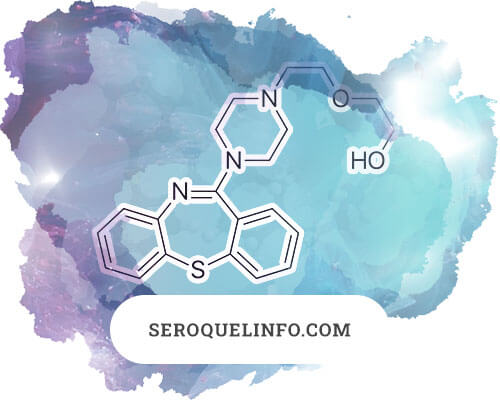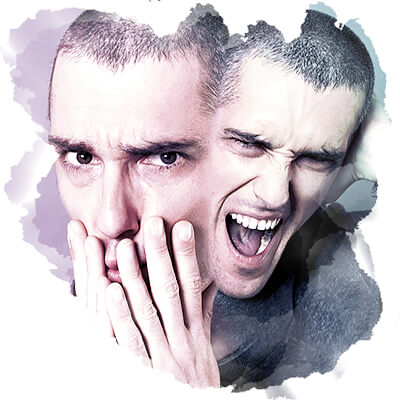Coverage of IDD and schizophrenia in psychiatric manuals
The problem of clarifying the boundaries of mental disorders and developing reliable diagnostic criteria is not new. A transatlantic study comparing the number of hospitalized patients diagnosed with schizophrenia in New York and London in the mid-twentieth century showed a significant increase in the number of such patients in New York year after year, with a fairly constant level over the preceding 40 years in London. This was due to the expansive diagnostic criteria for schizophrenia used in DSM-II, as well as the lack of a system for standardizing the diagnostic process. The use of structured diagnostic interviews reduced the rate of diagnosis of schizophrenia in New York and brought it closer to that of London (Sadock B.J. et al., 2017).
Both European and Russian psychiatrists use a unified system of classification and diagnostic criteria for mental disorders - ICD-10. It would seem that in Europe and in Russia, BAR and schizophrenia should have been diagnosed according to the same principle and in similar statistical proportions. In fact, as we showed in the introduction, the corresponding indicators are strikingly different. Therefore, it seemed logical to assume that doctors' differential diagnostic approaches might depend not only on classification, but also on coverage of the clinical picture of these diseases in the training of psychiatrists. To examine this issue, a comparison was made of several major contemporary psychiatry manuals for pregraduate and postgraduate medical education.
The foreign-language psychiatry publications studied were represented by textbooks and manuals from the United States, the United Kingdom, and Germany (Gelder M.G. et al., 2004; Kay J., Tasman A., 2006; Laux G., Mueller H.-J., 2015; Dogra N. et al., 2017; Sadock B.J. et al., 2017). All of the above sources use ICD-10 and DSM criteria as diagnostic criteria.
Domestic sources are represented by textbooks and manuals edited by B.D. Tsygankov (2011); A.S. Tiganov (2012); T.B. Dmitrieva (2014); N.N. Ivants (2016); Y.A. Alexandrovsky and N.G. Neznanov (2018).

We paid attention to the following attributes: descriptions of those forms of schizophrenia that are not included in the current ICD (recurrent, low-progressive, neurosis-like, etc.) (attribute #1); the description of those forms of schizophrenia that are not included in the current ICD (recurrent, low-progressive, neurosis-like, etc.). The following are some of the characteristics of schizophrenia: describing those forms of schizophrenia that are not included in the current ICD (recurrent, mild-progressive, neurosis-like, etc) (attribute 1); attributing schizophrenia to a schizophrenia rather than to an intermediate state between schizophrenia and IDU (attribute 2); using Schneider's rating criteria for assigning disorders to the schizophrenia group (attribute 3); and making a schizophrenia diagnosis when the mood symptoms are clearly expressed (attribute 4); the impossibility of establishing a schizophrenia diagnosis in the presence of distinct affective symptomatology (attribute #5); the possibility of non-congruent delusions in the structure of a BAR attack (attribute #6); the possibility of hallucinations in the structure of a BAR attack (attribute #7). The results of the source-sign comparison are presented in table.
| Editor, year | No. of the feature | ||||||
|---|---|---|---|---|---|---|---|
| 1 | 2 | 3 | 4 | 5 | 6 | 7 | |
| M.G. Gelder et al., 2004 | − | − | − | − | + | + | + |
| J. Kay, A.Tasman, 2006 | − | − | − | − | + | + | + |
| G. Laucks, H.-J. Müller, 2015 | − | − | − | − | + | − | − |
| N. Dogra et al., 2017 | − | − | − | − | + | + | + |
| B.J. Sadock et al., 2017 | − | − | − | − | + | + | + |
| B.D. Tsygankov, 2011 | + | + | + | + | − | − | − |
| A.S. Tiganov, 2012 | + | + | + | + | − | − | − |
| T.B. Dmitrieva, 2014 | + | + | + | + | − | − | − |
| N.N. Ivanets, 2016 | − | + | + | + | − | − | − |
| Y.A. Alexandrovsky, 2018 | − | − | − | + | + | + | + |
A comparison of the studied manuals allows the following conclusions to be made. Domestic sources reveal recurrent, neurosis-like, low-progressive and other forms of schizophrenia. Schizoaffective disorder is often considered a special case of schizophrenia (its recurrent form), and thus the significance of the presence of affective disorders in differentiating BAR from schizophrenia is ignored. The diagnostic criteria of the current classifications are not seen as something mandatory: "ICD-10... is not so much a diagnostic tool as it is intended for accounting and reporting documents of state medical statistics" (Tiganov A.S., 2016). In the same manual, one of the tables includes conditions corresponding to headings F30.2, F32.3, F30.8, F31.2, F31.5, F33.3 (affective disorders with psychotic symptomatology) in the group of seizure-like schizophrenia. The 2014 national guidelines explicitly stated that "the search for other, more specific symptom clusters that would help reliably diagnose schizophrenia has not yet been successfully implemented" (Dmitrieva T.B. et al., 2014).
Deficient disorders are desirable for diagnosis, but it may turn out that "personality changes are mild at first, so that they are noticed only by people who know the patient well" (Ivanets N.N. et al. , 2016), or there may be only an interictal "paling of the emotional volitional sphere" (Tsygankov B.D. et al., 2011). Other signs significant for establishment of a diagnosis of schizophrenia include thinking disorders (Tsygankov B.D. et al., 2011) and catatonic symptoms (Neznanov N.G. et al., 2009).
Bipolar affective disorder (in some manuals still referred to as MDP) is usually described as "pure" manic and depressive phases. Only rarely are there references to mixed states. Meanwhile, C. Leonhard (1968) underlined, that affective phases in the bipolar patient, are always characterized by the expressed polymorphism and dynamism. Most national guidelines consider the appearance of hallucinatory or delusional experiences in the clinical picture of an affective attack as grounds for excluding the diagnosis of affective disorder, and the ICD criteria are questioned: "the mention in ICD-10 of suspicion among signs of manic states should be considered a random error" (Dmitrieva T.B. et al. , 2014). "Acute sensory delusions also contradict the diagnosis of bipolar disorder, as do visual and auditory delusions" (ibid.). "The occurrence of acute sensory delirium, hallucinations, persecutory delirium, phenomena of psychic automatism, and catatonic disorders in the structure of the [affective] attack... are indicative of an endogenous [schizophrenic] process" (Tiganov A.S. et al. , 2012). "The manic and delusional syndrome... in MDP is not common and most often indicates an acute attack of schizophrenia" (Ivanets N.N. et al. , 2016).
It should be noted that in the second edition of the national manual of psychiatry (Aleksandrovsky Yu.A. et al., 2018) there are significant changes, diagnostic boundaries of the studied diseases are stated in accordance with ICD criteria and there is no expansive interpretation of schizophrenia boundaries. The BAR section contains indications of the possibility of non-congruent affect psychotic symptomatology.
Thus, many modern national psychiatric manuals include almost all inorganic diseases with hallucinatory and delusional symptoms in the structure of an attack within the schizophrenia framework. Recall that in the psychiatric literature of the late nineteenth and early twentieth centuries, BAR appeared under the name "manic-depressive insanity", and in the corresponding descriptions there was not even a hint of "psychological comprehensibility" of the patient's experiences.

Foreign sources describe only those forms of schizophrenia that are included in the current international classifications. Schizoaffective disorder is treated in all of the studied guidelines as a transitional link in the "BAR to schizophrenia" continuum, which, like BAR, is characterized by a defect-free course. When describing manifestations of schizophrenia, the low specificity of current diagnostic criteria is recognized. Kurt Schneider's rank I symptoms are not considered sufficient for unequivocal diagnostic judgment. Deficient disorders and specific thought disorders are cited as the most relevant symptoms for diagnosis. Some manuals suggest that the diagnosis of schizophrenia can only be made by "exclusion method" - including exclusion of BAR (Laucks G., Muller H.-J., 2015). In all of the sources studied, the presence of marked affective symptoms is a barrier to the diagnosis of schizophrenia, leaving the clinician with a choice only between IDD and BAR. This choice should be made on the basis of the correlation in time of affective and psychotic manifestations.
Thus, foreign psychiatric manuals benefit from a more balanced and more classical approach to the diagnosis of schizophrenia. The presence of some hallucinatory delusional experiences in the structure of a seizure is recognized as insufficient and nonspecific to resolve the diagnostic dilemma in favor of schizophrenia. More importance is given to thinking disorders and the development of deficit disorders in the dynamics of the disease, and the search for specific markers of the disease is discussed. The boundaries of affective disorders are considerably broader; their understanding by foreign specialists is much closer to that of Carl Leonhardt, who described the dynamism and polymorphism of the clinical picture of bipolar and cycloidal psychoses.
The detected discrepancies in interpreting the concepts and signs of schizophrenia and BAR, establishing the boundaries of these diseases, and the principles of differential diagnosis are undoubtedly one of the reasons for diagnostic errors among domestic psychiatrists.
Current misdiagnosis
Does the vagueness of criteria in current classifications and the influence of subjectivity have any practical impact on the distinction between affective disorders and disorders of other groups? In what follows, we show that the "high elasticity and variability" of the criteria for affective disorders and schizophrenia, and the presence of certain "symptom overlap zones" between these disorders (Marneros A. et al., 2008), cause diagnostic discrepancies.
Many patients with BAR are observed with a misdiagnosis for a long time without receiving adequate therapy (Bowden C.L., 2009); the correct diagnosis is established after a considerable time (Knežević V., 2013; Allilaire J.F., 2010; Kessing L.V., 2005; Hirschfeld R.M., 2003), which leads to increased economic costs (Li J., 2002). Many authors (M.V. Semenova-Tyan-Shanskaya, 1968; Mosolov S.N., 2014; A.S. Avedisova, 2013; Meyer F., 2009) point out the vagueness of diagnostic criteria for BAR, including in ICD-10 and the controversial nature of their application (Mazo G.E., 2015). Among the reasons complicating the differential diagnosis, it is necessary to note polymorphism of manifestations of BAR, especially in aggravated cases when there is a combination with atypical symptomatology, personality disorders, low social adaptation, etc. (Bobrov A.S., 2009). (Bobrov A.S., 2014; Yakovleva A.L., 2014).
In domestic and foreign literature we found two vectors of study of the issue of underdiagnosis of affective disorders. The first vector is revealed in the works describing underreporting of manic and, especially, hypomanic states among patients observed with diagnoses of depressive disorders. One reason for the lack of attention to subthreshold manic (in fact, hypomanic) episodes is that they generally do not impair daily functioning and do not lead to visits to a psychiatrist (Cassano G.B., 1999). Another possible reason is the presence of atypical symptomatology in the structure of a depressive episode (Akiskal H.S. et al., 1995). In addition, insufficient detection of attacks of short duration (Morozova V.P., 1983) is mentioned among the possible reasons. It has been noted that the heuristic nature of the diagnosis is one of the main reasons for hypodiagnosis, and the introduction of DSM-IV criteria led to an increase in the detection of type II BAR from 0% in 2006 to 9.7% in 2013. (Bongards E.N., 2013). Hypodiagnosis of bipolar disorder is the reason for choosing the wrong therapeutic tactics, including missing the opportunity to prescribe normotimics, which subsequently affects patients' quality of life (Altshuler L.L. et al., 2006).
The second group of authors consists of those researchers who study hypodiagnosis of affective disorders at the expense of their overdiagnosis within psychotic disorders, including schizophrenia.
Not only in Russia, but also abroad, there is a high rate of misdiagnosis in the initial presentation of patients with BAR. Instead of a diagnosis of affective disorders, patients are often diagnosed with transient psychosis, reactions to stress, substance use disorders, etc. (N.G. Efimov, M.V., "Therapeutic and Psychotic Disorders", in Russian). (N.G. Efimovich, 1974; Kessing L.V., 2005). In the work of V. Knežević et al. (2013), the rate of correct diagnosis of bipolar disorder is estimated to be 48% at first contact, while the remaining patients are mostly diagnosed with psychotic disorders (ICD-10 heading F2). Similar data are found in the work of L. Wolkenstein et al. (2011), whose work shows misdiagnosis in 60% of cases, despite the presence in the clinical picture of a sufficient number of criteria of affective disorder. The authors see the main reasons as underreporting of affective manifestations and overemphasis on psychotic symptoms. In the work of F. Meyer and T.D. Meyer (2009) showed that the mention of hallucinations dramatically reduced the likelihood of a diagnosis of affective disorder and increased the likelihood of a diagnosis of "psychotic disorder", although hallucinations can occur in one in eight patients with BAR (Baethge C., 2005). Other symptoms of the psychotic register are also not uncommon. According to one study, of the BAR patients interviewed, up to 86% reported experiencing delusions at some point in their lives (Mitchell P.B., 2006). Excessive attention to psychotic symptoms with overestimation of the diagnostic significance of Kurt Schneider's rank I criteria is also mentioned in W.T. Carpenter (1974), who demonstrates that of 165 patients with rank I symptoms, 39 (23.6%) had a diagnosis of bipolar disorder. This problem attracts the attention of not only foreign specialists. S.N. Mosolov (2008) notes that "mixed and manic delusional states are mistakenly considered as manifestations of schizophrenia, which leads to prescription of powerful typical neuroleptics, often in depot form, which promotes the development of protracted states with the formation of frozen manic delirium or adynamic depressions". It is also confirmed by early observations of A.S. Tiganov (1966) who noted manic attacks in the structure of which such manifestations as delirium, hallucinations, phenomena of mental automatism, hebephrenic disorders were observed, P.F. Malkin (1964) mentioned "protrague" character of the diagnosis, which was expressed in automatic repeat of even obviously erroneous diagnosis at repeated hospitalizations. In his work, among the reasons for overdiagnosis of schizophrenia, he points to "haste, diagnosis "at a glance", based on psychopathological data alone...", which contradicts Kraepelin's basic idea about the determining value of the outcome. The above work is a reflection of the trend towards a broader diagnosis of schizophrenia, including hypodiagnosis of MDP, which apparently emerged at that very time. The presence of this tendency is indicated by other works of the time (A.A. Askarov, 1977, E.G. Katan, 1985), which described observations of patients with phase affective fluctuations within the framework of schizophrenia which, however, was characterized by "slow increase of personality changes, not leading to social disadaptation for a long time". It is necessary to note the works reflecting difficulty of diagnostics of the affective disorders with affective and delirium-like attacks and without defect remission (N.M. Mikhailova, 1974, L.O. Sudareva, 1981). On the whole, it is possible to speak about the increase of "schizophrenotropy" which was taking place at that time. "schizophrenotropism" in domestic psychiatric practice.

Questions of "specific" defect are also ambiguous. For example, S.N. Mosolov (2000) and E.S. Herbener (2001) have noted in their works the great similarity of moderately and weakly expressed deficit disorders in schizophrenia and symptoms of a depressive episode. Similar data are cited by K. Hinkelmann et al. (2013) who propose, however, as a kind of differentiating marker antidepressants, the prescription of which alleviates the condition of depressed patients, but does not bring any tangible benefit to patients with schizophrenia.
The importance of differentiating BAR from schizophrenia is also worth considering from a social functioning perspective, according to which BAR is a more favorable disease, as schizophrenia has a pronounced stigmatizing effect, especially unfavorable in relation to single patients (Yastrebov V.S. et al., 2009). According to A. Üçok et al. (2012) the diagnosis of schizophrenia is considered by many patients as a serious discriminatory factor, limiting their chances of getting a job, leading to reduction or avoidance of social contacts. According to a WHO report (WHO, 2006), "stigmatization is a major cause of discrimination and social exclusion: it has a negative impact on people's sense of self-esteem, leads to the breakdown of family relationships and limits opportunities for participation in society, housing and employment.
An analysis of publications describing the economic costs associated with treating BAR and schizophrenia was conducted. According to different authors (Wu E.Q., 2005; Kennedy J.L., 2014), the cost of treating a patient with schizophrenia in the United States (not including non-medical costs, disability, etc.) is $15,500-22,300 per year. According to Russian authors (Lyubov E.B. et al., 2012), the annual medical expenses for treatment of one patient with schizophrenia in the Russian Federation in 2014 were estimated at 191 thousand rubles. The value of medical expenses per patient with BAR in the USA (Sajatovic M., 2005; Kleine-Budde K., 2014) is estimated at 8-14 thousand dollars per year. We were unable to find estimates of the cost of treating BAR in the Russian Federation, but the annual cost of treating depression, depending on the severity, is from 19 to 99 thousand rubles (average 73785.29 rubles) (A. Kulikov, Yu.M. Dedyurina, 2011). Based on the data of foreign researchers and taking into account the similarity of therapeutic approaches in treating bipolar disorder, we can assume that in the Russian Federation as a whole the cost of treating a schizophrenic patient can exceed the similar indicator for a bipolar patient by 1.5-2 times. Issues of misdiagnosis of affective disorders exist and attract the attention of specialists in different countries. Available domestic publications have not found information that provides a comprehensive answer to the question of the causes of inadequate diagnosis of BAD. It is necessary to assess the problem on the example of an inpatient unit, identify factors contributing to diagnostic errors, and propose realistic ways to reduce their number.
Therapeutic approaches
Currently, pharmacotherapy of schizophrenia is reduced to the prescription of basic antipsychotic therapy in the acute period with the addition of additional drugs after exacerbation relief, which will be aimed at influencing the remaining symptomatology - these may include EPS correctors, antidepressants, drugs to reduce the severity of neurocognitive disorders, etc. Issues of rational pharmacotherapy of bipolar disorder cannot be in isolation from its correct diagnosis (Mosolov S.N., 2015). According to J.J. Gou et al. (2007) patients with bipolar disorder are treated with medications from different groups: lithium 13%; anticonvulsants 35%; atypical antipsychotics 24%; neuroleptics 22%; and antidepressants 42%. Such heterogeneous groups of medications are caused by clinical variants of bipolar disorder, according to which the following description will be structured.
Treatment of manic episodes
Manic phases are often treated with antipsychotics. It is possible to meet a point of view according to which the effect of antipsychotics is more pronounced, and comes more quickly than the effect of lithium (Choy J.C., 1991). Antipsychotics are especially often prescribed to male patients due to the doctor's desire to reduce behavioral disorganization, impulsivity and aggressiveness faster (Petrova N.N., Dorofeikova M.V., 2016). Attempts to reduce adverse events associated with their use by calculating chlorpromazine equivalents have their methodological flaws, and for this reason do not always achieve their goal (Popov M.Y., Kozlovskaya P.V., 2016). Although neuroleptics are used in the treatment of manic phases of BAR, their prescription requires great caution and a reasonable approach to dose selection (Rifkin A. et al., 1994), although recommended by some authors for primary treatment of mixed states (Vorobyov R.V., 2013). In a number of cases antipsychotics, including atypical ones, are prescribed by doctors outside of the recommended use ("off-label") (Petrova N.N., Dorofeikova M.V., 2013). The use of antipsychotics as monotherapy is associated with a 9.4-fold increase in the rate of nonfatal suicidal behavior, and the combination of an antipsychotic and a normotimer is 3.5 times greater than normotimer monotherapy (Yerevanian B.I. et al., 2007). The fundamental question of the necessity of prescribing antipsychotics is debatable, since according to A.C. Swann (2002), patients with psychotic symptoms respond equally well to therapy with valproate and lithium salts. At the same time, antipsychotics are unsafe drugs, leading to an increase in patient mortality of 1.5-3 times (M. Joukamaa et al., 2006). In addition, it is worth noting the ability to cause induced depression, noted by G.Y. Avrutsky (1988) on the example of chlorpromazine, M.Y. Popov on the example of haloperidol (2012). There is a point of view according to which depressogenic influence of antipsychotics, including atypical ones, is caused by their influence on dopaminergic transmission (Bubnova Yu.S. et al., 2012, Petrova N.N., 2016). Works devoted to atypical antipsychotics also confirm this position (A.B.Smulevich, 2001).
No less attention is paid to the issue of induction of pseudo-deficit symptoms in different groups of patients by neuroleptics (Lewander T., 1994). High similarity of deficit disorders in schizophrenia and depressive symptomatology with depressogenic effect of antipsychotics and their sedative effect is noted (Barnes T.R., McPhillips M.A., 1995). The issue of their differential diagnosis is very difficult, including due to the overlap of symptomatology and the great similarity of the conditions. However, there are opinions (Karamatskos E., 2012) according to which second-generation antipsychotics due to less inhibition of D2 receptors and affinity to some other neurotransmitter systems may cause deficit changes to a lesser extent, and possibly partially reduce them.
Normotimics are an alternative method for the management of manic states. Thus, a study of the results of a randomized study by C. Bowden et al. (1994) showed that both lithium and valproates were effective in treating mania (more so than placebo). These findings have been reflected in the development of therapeutic algorithms, such as the rather widely known "Texas Algorithm" (Crismon M.L. et al., 2007). The use of normotimics will be discussed in more detail below.
Treatment of depressive episodes
Treatment of depressive episodes most often begins with the prescription of antidepressants. The ideas about the pathogenesis of depression, including disorders of catecholamine metabolism, serotonin, according to some data - melatonin are studied in sufficient detail and impose an imprint on the choice of the drug (Kanaeva L.S., 2013). According to publications in recent years, there are ongoing works on serotonin (Bezrukov M.V., 2014; Levchuk L.A., 2012) and melatonin (Kapser S.,2010; Hickie I.B., 2011) theories. Some authors single out an organic component in the development of depressive disorders (Yerkinbekova B.K., 2009). However, the presence of information about the bipolarity of affective fluctuations in a particular patient imposes significant restrictions on their application, recently cautiously removed by some authors (Tyuvina N.A., 2014). In studies on bipolar patients, antidepressants often led to a prolonged phase, in contrast to lithium did not reduce the risk of suicide, did not help prevent relapses of BAR (Ghaemi S.N. et al., 2003). Normotimics are often considered the drug of choice for the treatment of bipolar depression (Crismon M.L. et al., 2007; Zornberg G. et al., 1993). Lamotrigine has sufficient antidepressant effect (Calabrese J.R. et al., 1999). There are numerous data on the possibility of treating bipolar depression with atypical antipsychotics, such as quetiapine (Sanford M. et al., 2012; Maneeton N. et al., 2012), aripiprazole (Nasr R. et al., 2014), olanzapine (Selle V., 2014). However, their use has a number of limitations described above. Electroconvulsive therapy is also described as a treatment for depressive disorders (Abritalin E.Yu., 2010), which, according to U. Kessler (2013), does not lead to a greater degree of cognitive impairment than traditional drug treatment. However, according to A.V. Ushkalova (2012), "there is no medication that in a monotherapy regime could provide all the effects necessary for bipolar depression, namely rapid relief of depressive and psychotic symptoms, suicide prevention and prevention of both pole phases".
Supportive therapy
The "gold standard" of maintenance therapy for bipolar disorder includes drugs from the group of normotimics - lithium, carbamazepine, valproate, lamotrigine, etc. (Avrutsky G.Y., 1988; Mosolov S.N., 2008; Dmitrieva T.B. 2009; Crismon L.M. et al. 2007; Geoffroy P.A. et al. 2014, many other authors). Most often normothetic effect is connected with influence on GABA-ergic system (Mosolov S.N., 1994). High doses of carbamazepine, sodium valproate and lithium salts inhibit GABA transaminase in the hippocampus, brainstem and basal ganglia, which leads to a decrease in GABA metabolism, which inhibits the hypothesized trigger mechanism of circular phases due to being a presynaptic modulator of dopaminergic neurons. In addition to the antidopaminergic effect, normotimics also have a certain similarity in their effect on the cholinergic system.
The central effect of normotics is also associated with the influence on benzodiazepine and opiate receptors, with inhibition of adenylate cyclic adenosine and guanisine monophosphate activation and a number of other mechanisms. Based on the known commonality of normotymic and anticonvulsant effects, the theoretical model of amygdallar "ignition," described in the development of the experimental seizure syndrome, has been extended to the occurrence of affective disorders. This phenomenon may explain the occurrence of paroxysmal manifestations by the existence of prolonged, strictly periodic subthreshold, nonspecific irritations of brain structures, which eventually lead further to paroxysmal activity. In affective psychoses, such disturbances develop as a consequence of nonspecific irritations in the amygdala complex and limbic structures, which eventually deplete the inhibitory potential of the GABAergic system.
The most studied mood stabilizer is lithium salts (McIntyre R.S. et al., 2004). It takes from two (Licht R.W. et al., 2001) to ten years to develop a noticeable normotensive effect (Berghofer A. et al., 1996). Available reviews and meta-analyses show a statistically reliable advantage of lithium therapy over placebo (Burgess S. et al., 2003). In addition to phase reduction and prolongation of intermissions, lithium also contributes to a decrease in the frequency of life-threatening suicidal behavior (Tondo L. et al., 1998, Baldessarini R.J. et al., 2006). A number of works describe the neuroprotective and neurotrophic effect of therapy with lithium, in the form of a decrease in the degree of reduction of both gray and white matter (Moore G.J., 2000; Bearden C.E. et al., 2007; Vazagaeva T.I., 2013). Some sources find evidence of a favorable effect of elevated concentrations of lithium in drinking water on suicide mortality in the population (Kapusta N.D., 2011), although this pattern is not found in all regions (Kabacs N.. 2011). Unfortunately, among the long-term effects of lithium use it is not uncommon to find pathology of the thyroid and parathyroid glands, which can be an independent cause of depressive-like disorders (Grechanyi S.V., Minakov A.A., 2013).
The choice between lithium and carbamazepine is often decided in favor of lithium due to its better tolerability and lower frequency of patient-initiated therapy interruption (Greil W. et al., 1997). According to F.K. Goodwin et al. (2003), taking lithium is preferable to taking valproates due to a 2.7-fold decrease in the risk of committing suicide. However, other data show no significant differences in the effectiveness of lithium, valproate, and carbamazepine in preventing bipolar disorder, including suicidal behavior (Yerevanian B.I. et al., 2007). We found works demonstrating the advantage of valproates over lithium, however, it is worth noting that the advantage was observed only during the first year of observation and both normotimics were prescribed in combination with atypical antipsychotics (Woo Y.S. et al., 2014). Domestic researchers hold a similar point of view (Ushkalova A.V., 2007). Such a number of different opinions indicates only one thing - normotics are effective drugs, and the choice of a particular drug depends on a large number of factors. Due to various side effects, it is often necessary to change one normotimic for another, at times prescribing two or more drugs to achieve an effect (McIntyre R.S. et al., 2004), in some cases supplementing normotimics with drugs from the antipsychotic group (Kratinin D.F., 2014).
Data on the normotensive activity of atypical antipsychotics are contradictory. Registration studies commissioned by and at the expense of pharmaceutical companies demonstrate the presence of normothetic activity of drugs from the AAP group. We found such results for quetiapine in combination with lithium/valproate (Altamura A.C. et al., 2008; Suppes T. et al., 2009); olanzapine in treatment of manic (Rendell J.M. et al., 2003), depressive (Cruz N. et al., 2014) BAR episodes, and as maintenance therapy (Cipriani A. et al, 2009); However, it is worth noting that the number of side effects in the group of combined therapy is naturally greater, and the comparative harm of antipsychotics when they are taken permanently is higher than when they are gradually withdrawn (Wunderink L. et al., 2013). Similar data are found in domestic researchers (Kostyukova E.G., 2013, 2014; Mosolov S.N., 2013).
A notable example is the work of A.S. Tsai et al. (2011). Their meta-analysis of available publications on the efficacy of aripiprazole antiretroviral activity in AD found that despite the seemingly large number of publications, only one study cited by all (Keck Jr.P.E. et al., 2006, 2007) was found, with not very revealing results, which, according to the article authors, is not enough for conclusions about proven effectiveness. It would be unfair not to mention the opponents of the use of AADs as maintenance therapy in bipolar patients. As an example, we can mention the work that in principle questions the conclusion of the American Food and Drug Administration (FDA) that atypical antipsychotics have real countercurrent (normotimic) properties existing in recognized normotimics (Goodwin F.K. et al., 2011).
To conclude this section, because of the significant differences in the pathogenesis of bipolar disorder and schizophrenia, their therapies and methods are just as different. Therapy with antipsychotics is certainly necessary for patients with schizophrenia, but can have a dramatically negative effect on patients with BID. These patients have worse tolerance to antipsychotics, a "blurring" of symptoms, and the appearance of "pseudo-deficit" disorders that make it difficult for them to socialize. Thus, the diagnostic errors described above lead to the erroneous choice of therapeutic regimens. We will try to estimate the degree and significance of this influence.
Summary
Since the emergence of the concepts of cyclical mood disorders and endogenous psychotic disorder followed by deficit symptomatology, their development has followed a parallel course. Despite the presence of at times outwardly similar psychopathological phenomena, the two diseases have a different course, which affects the fate of patients suffering from them in different ways. The accumulation of large amounts of information on the inheritance, pathomorphology, and psychopathology of these diseases does not exclude frequent diagnostic inaccuracies that lead patients with affective disorders to be followed for a long time with a schizophrenia diagnosis and receive therapies that do not match their actual illness. It is possible that data from the world literature may also be reflected in domestic psychiatric practice, which requires detailed study. It is necessary to study the current state of the issue of diagnosing affective disorders in the Russian Federation, to assess the impact of the diagnosis on the therapy prescribed to patients, and to find out the impact of therapeutic strategies on the course of BPD and the social functioning of patients.













